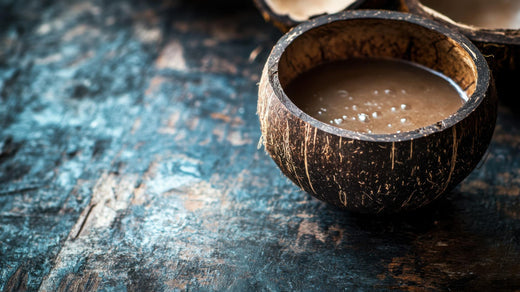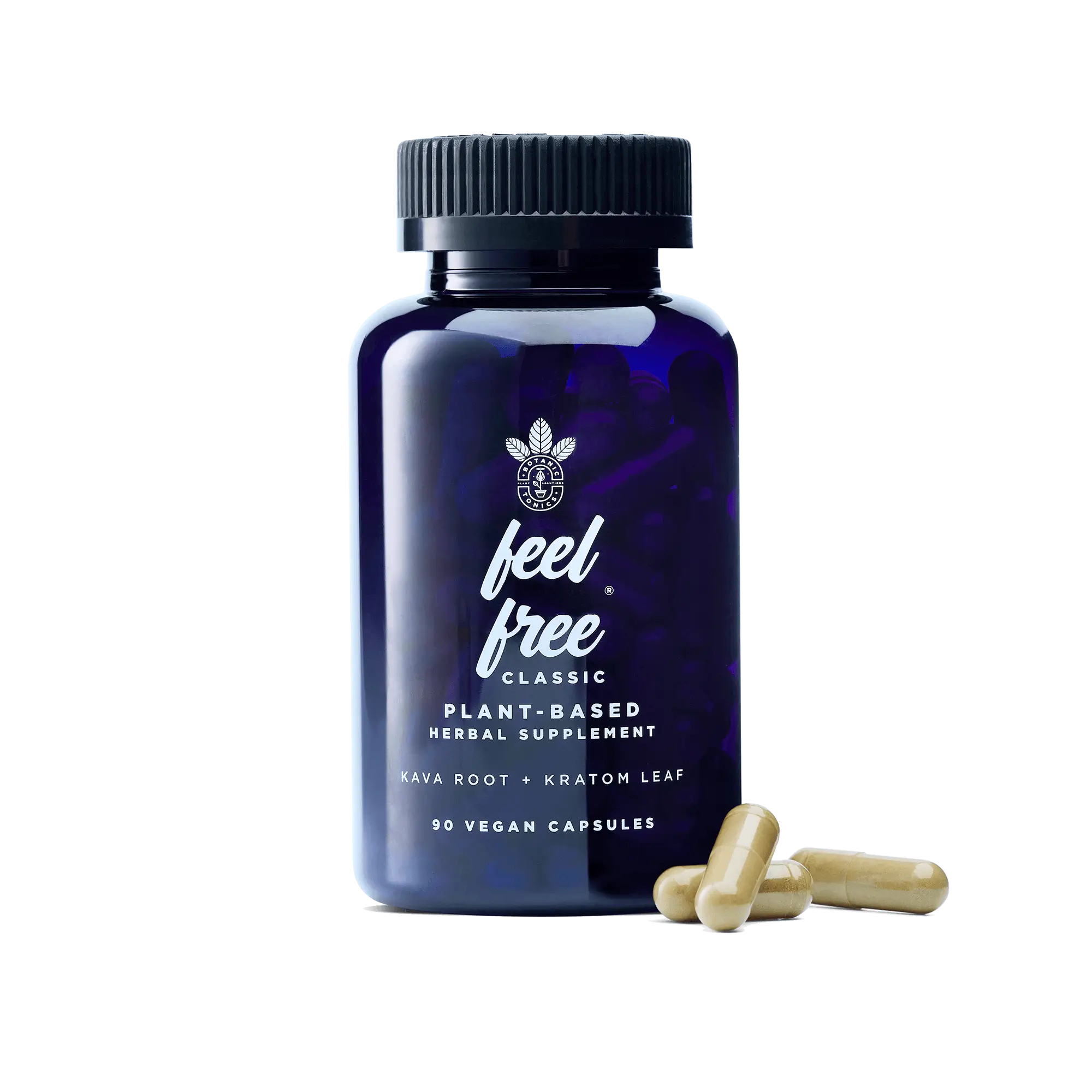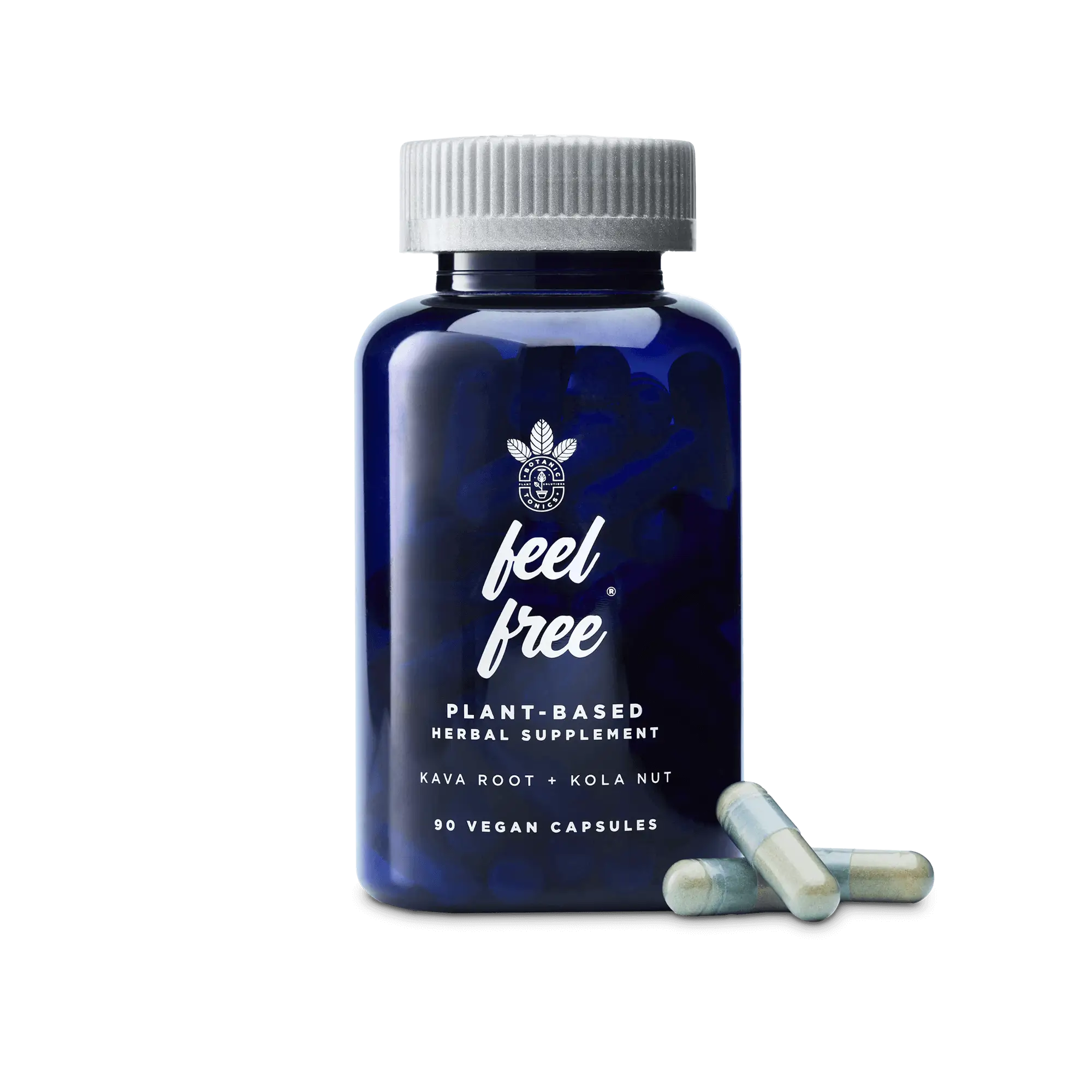Derived from the roots or stump of the kava plant (or Piper methysticum), kava (or kava kava) is an herbal remedy with origins in the South Pacific.[1] When consumed in capsule or tonic form, kava offers a lift to your mood—you might feel calmer, more focused, or more apt to socialize. This is why it’s been used as a ceremonial mean in the South Pacific and Southeast Asia for centuries, and why it’s now sold as a supplement around the world.
If you’ve recently stocked up on kava, you might be wondering how to keep it fresh. Read on for our complete guide on how to store kava, from the best storage containers to temperature requirements. The longer your kava lasts, the longer you can enjoy its benefits.
Understanding Kava Storage Needs
Like any tropical plants or herbs, kava requires certain conditions to thrive, even in powder or liquid form (but when stored properly, can last up to a year or more). The most pertinent rule of thumb is to protect kava from heat and moisture.[2]
Seal your kava root powder, capsules, or tonic in an airtight container and store them in a cool, dry place to ensure their longevity. We recommend storing kava in the fridge or freezer. Not only will this keep them cool and dry, but it will also improve the taste of kava in its liquid tonic form (which is often best served chilled).
Ideal Conditions for Storing Kava

Kava needs to be sealed and protected from the elements—and for good reason. Heat, light, and exposure to moisture or humidity can cause kava to spoil or lose its potency, so it's crucial to follow the recommended guidelines in order to optimize your kava experience.
Temperature Requirements
Kava needs to be kept relatively cool, even when being baked or boiled, in order to preserve its starch content. There was once a commonly-held theory that kava’s effects diminish when overheated because the heat destroys the plant’s kavalactones. These are kava’s active ingredients, and the plant contains dozens, if not hundreds, of variations.[3]
Kavalactones work by enhancing the function of GABAA receptors in the brain, easing hyperactivity in the central nervous system.[4] This may help relieve feelings of occasional stress and grant you that quiet sense of focus that helps improve cognitive function.
However, the theory that heat destroys kavalactones has been debunked in recent years. Kavalactones’ melting point lies between 248°F and 284°F, and their boiling point sits even higher at around 850°F, so you’re extremely unlikely to destroy the compounds while heating your kava tea.[5]
Even so, keeping your kava’s temperature below 140°F is still critical for another reason: starch. Kava root is about 43% starch, and somewhere between 140°F and 203°F, that starch content begins to dissolve in water, leaving the kava unpleasantly gelatinous.
To preserve starch and its texture, we recommend storing your kava in a cold environment and preparing it at room temperature (98.6°F maximum).
Light Exposure
Thanks to its roots in the Pacific Islands (it’s believed to have been first domesticated in Vanuatu before spreading to Hawaii, Fiji, Samoa, and Tonga),[6] kava loves the sun. When keeping a live kava plant in your home, it’s advised that you keep it no less than three feet from a south-facing window.[7] Otherwise, your plant may stop growing and thriving, and may begin to lose leaves.
However, in the case of kava powders and liquid extract, the opposite is true: storage in the dark is ideal. Storing your kava in sunlight exposes it to higher temperatures as well as humidity (aka moisture), the combination of which could cause it to gelatinize or spoil.
This is why the cool, dark fridge or freezer is ideal. A cooler, pantry, or other dark storage container should also do the trick.
Best Storage Containers for Kava

In most cases, kava can be stored in the container it came in (like a sealed bottle or bag). But in a pinch—for instance, if you’ve lost the container, or want to travel with a smaller, pre-portioned amount of kava—any airtight container will do.
A plastic bag or reusable jar can tote your kava—even better if it’s an opaque one to block out light. Avoid storing your kava with other liquids in order to prevent spoiling from contact with moisture, and be mindful of its temperature if you bring it on the go.
Using some of your kava can mean the rest of your supply is exposed to the elements. You’ll be removing your container from your fridge or pantry, opening it, and exposing it to air, light, heat, and moisture. For this reason, we recommend splitting your kava into smaller amounts, especially when in powder form. This way, you can properly portion your kava and use it one serving at a time (without putting the rest of your supply at risk).
Tips for Long-Term Kava Storage
So long as it’s stored properly, kava has quite the shelf life. Kava typically won’t spoil for at least six months to a year—possibly longer, although its effect might eventually lose its potency.
The more airtight the container, the better, as kava powder lasts longest when packed in a vacuum-sealed bag. Kava can be frozen for up to six months (and will likely be kept in shape thanks to the absence of light and heat).
It’s important to note that kava in its liquid form won’t last quite as long as a capsule or powder once opened. Once you open a liquid kava tonic, be sure to store it in the fridge and consume it within two days. Otherwise, the kava’s taste, smell, and potency may have already begun to change. Even when fresh, kava tonics tend to taste best chilled.
Signs Your Kava is Stored Properly
Kava extract is relatively “tough” and doesn’t go bad easily. That said, always follow the consume-by date on your particular product. Additionally, if you notice a funky, “spoiled” taste or smell or your kava container’s seal has been opened, it’s probably best to secure a fresh batch.
Other, more subtle signs might indicate that your kava has reached its limit—for example, it might not have as potent of an effect when consumed, or might become more gelatinous when prepared as a tea. However, this typically won’t become an issue for at least six months (unless your kava is exposed to extreme heat or moisture).
Kava Expiration
Does kava expire? The short answer is no. Your kava products will not expire. However, as mentioned above, your kava may lose its potency as it ages. Following our guide for proper storage conditions will ensure you are enjoying your kava at its best!
Enjoying Fresh Kava
Now that you know how to store your kava products, you’re ready to enjoy their benefits.
Kava provides a clean, calm, focused feeling. Taking a kava supplement can ease feelings of subtle discomfort and can help with occasional anxiety.
When used socially, kava may help you feel more at ease. When taken in the morning, it can quiet the mind and provide a sustained sense of focus as you work.
Kava kicks in quickly (often within just 15 to 20 minutes), and its effect lasts long (often 3 to 4 hours).
More About Kava Supplements
The kava plant belongs to the pepper family, and is native to several islands of the South Pacific (including Hawai’i). Resembling a leafy bush, the plant is typically pulled from the ground and its roots or stump are ground into powder.
This powder is sometimes used in its raw form to make tea, or baked into food. Often, kava extract is used as a supplement (made by soaking and distilling the kava root in water or pressing and“juicing” it). Kava extract can be found in capsule form (which lasts longer and is more portable, as mentioned earlier) or as a liquid tonic (which can be chilled and consumed in liquid form).
Enjoy Kava With Ease With feel free

Kava supplements are an all-natural way to feel good while you work or socialize. In the form of a capsule or tonic, kava has an impressive shelf life, and adhering to proper storage guidelines will help it last even longer.
Kava should always be sealed in an airtight container, kept cold and dry, and shielded from light if possible. It can be enjoyed for months in powder form and kept fresh for days in liquid form.
feel free is here to replenish your kava supply. Our feel free CLASSIC tonic comes in double-serving bottles, takes just 15–20 minutes to kick in, and lasts for 3 to 4 hours.
Our feel free capsules are available in both caffeine-free and naturally caffeinated forms, with 30 servings per bottle. This option is taste-free, won’t cause nausea or numbing, and is perfect for taking on the go.
There’s a reason kava has been hailed for 2500 years as a “plant of the gods” by Pacific Islanders.[8] The naturally easeful, mood-boosting benefits can help restore the mind, body, and soul. Add a feel free kava supplement to your life and see what the buzz is about.
Sources:
- WebMD. Kava—Uses, Side Effects, and More. https://www.webmd.com/vitamins/ai/ingredientmono-872/kava
- Drugs.com. Kava. https://www.drugs.com/mtm/kava.html
- ScienceDirect. Kavalactones. https://www.sciencedirect.com/topics/neuroscience/kavalactones
- Cleveland Clinic. Gamma-Aminobutyric Acid (GABA). https://my.clevelandclinic.org/health/articles/22857-gamma-aminobutyric-acid-gaba
- International Kava Organization. 1 Essential Tip to Avoid the Unappealing Gelatinization of Kava: Understanding the Crucial Role of Starch and Temperature. https://internationalkava.org/articles/kava-science/essential-tips-to-avoid-the-nasty-gelatinization-of-kava-understanding-the-crucial-role-of-starch-and-temperature/#:~:text=These%20temperatures%20are%20well%20above,F%20(60%C2%B0C).
- University of Hawai’i. Kava: The Drink of Peace. https://www.ctahr.hawaii.edu/deFrankJ/Streaming%20Media/Windows_Media/hcb_BEVERAGE_CLASS_F2011/text_f2011/pdf_slideshows_f2011/kava01_11112011_%20lecture.pdf
- Greg. Kava. https://greg.app/plant-care/piperaceae-methysticum-kava
- Research Outreach. De-mythologizing and re-branding the traditional drink kava. https://researchoutreach.org/articles/de-mythologizing-traditional-drink-kava/
















